Introduction
Out of the thousands of trading products available throughout the world, one characteristic brings them all together—they either trend up or down, or range within two rough areas. Some traders prefer joining the trend and riding—others look for consolidating price action to try and trade a recurring cycle of swings.
What is a trend?
Have you ever looked at a chart and saw a market moving higher consistently with minimal breaks? Maybe you follow the price of gold and notice that day after day price moves higher. A trend is a directional move in a specific asset with minimal breaks or corrections.
In other words, imagine a trading product that is moving 1% higher every day and has done so for the past two months. In this case, that product is said to be in an uptrend. Visually speaking, an uptrend looks like a set of stairs that you can climb, which each step being higher than the previous one. This is also the case for downtrends but with lower prices over time, shown in Figure 1.
Figure 1
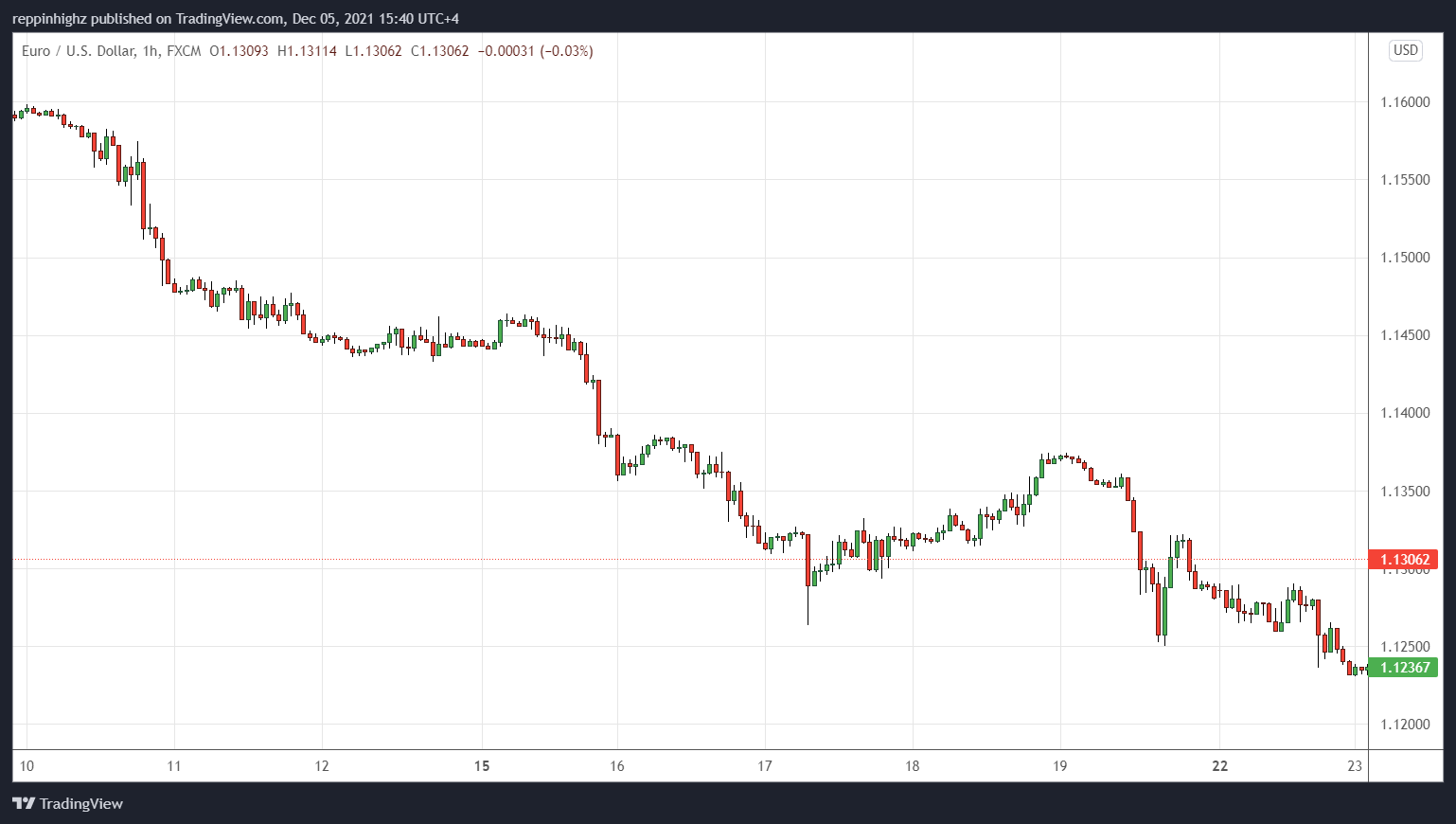
From a technical analysis perspective, an uptrend is a series of higher highs, and higher lows, while a downtrend represents lower highs, and lower lows.
What is a trading range?
A trading range, shown in Figure 2, is a type of market that shows price stuck between two price points. In this case, price fails to break resistance or support, repeatedly. It can stay within the range for a while, swinging higher and lower, until something meaningful happens.
Figure 2
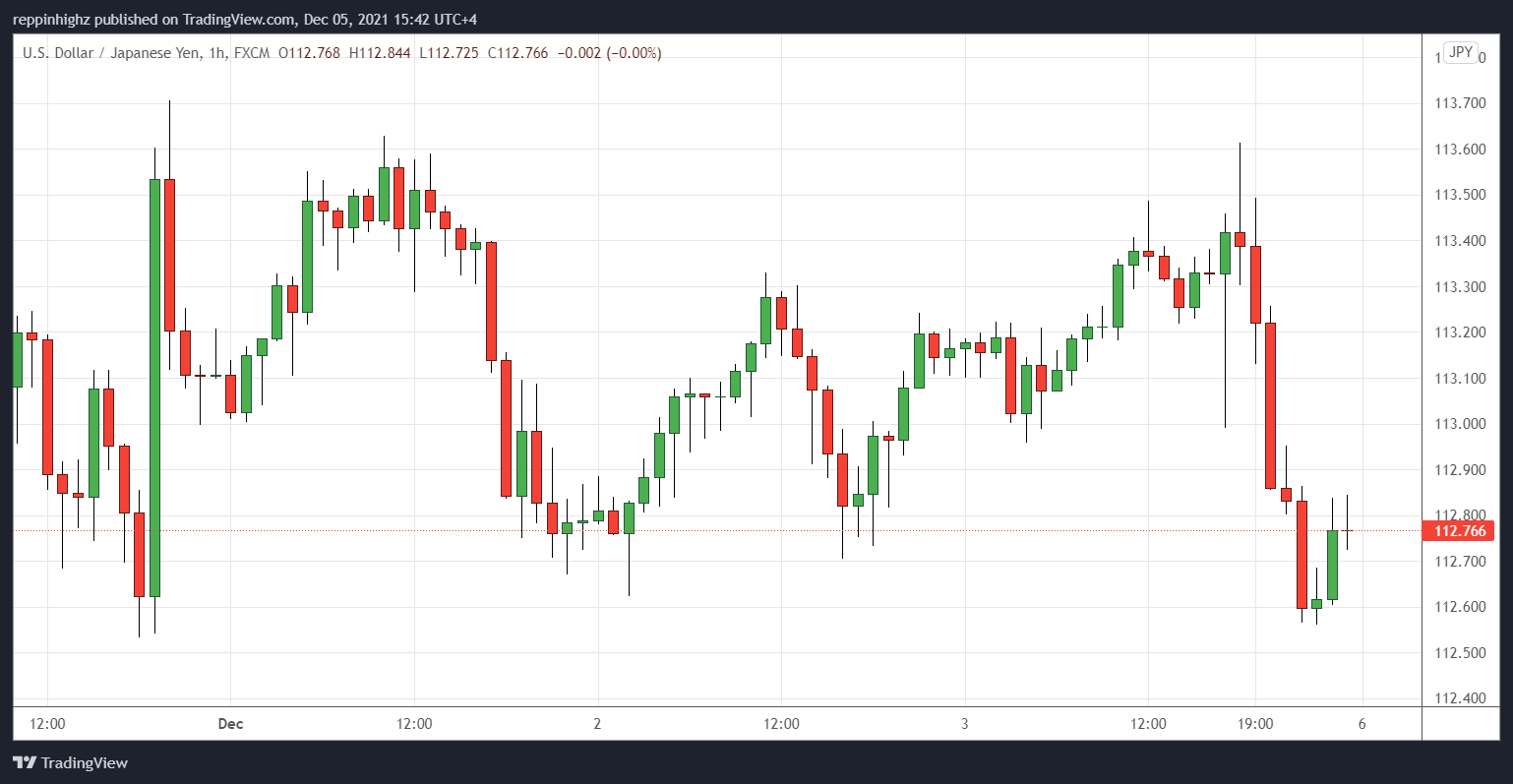
Trading ranges are common occurrences and can even happen within trends when looking at different timeframes. They can also be a sign of distribution or accumulation of positions as well as anticipation ahead of a very big event that is likely to be a market mover.
Identifying market conditions
While identifying trends is straightforward, establishing that a certain period is a trading range is a bit trickier. The easiest way to identify a trading range is to find a support and resistance areas that have been tested at least once. The following example, Figure 3, will give you a look at the initial stages of a trading range.
Figure 3
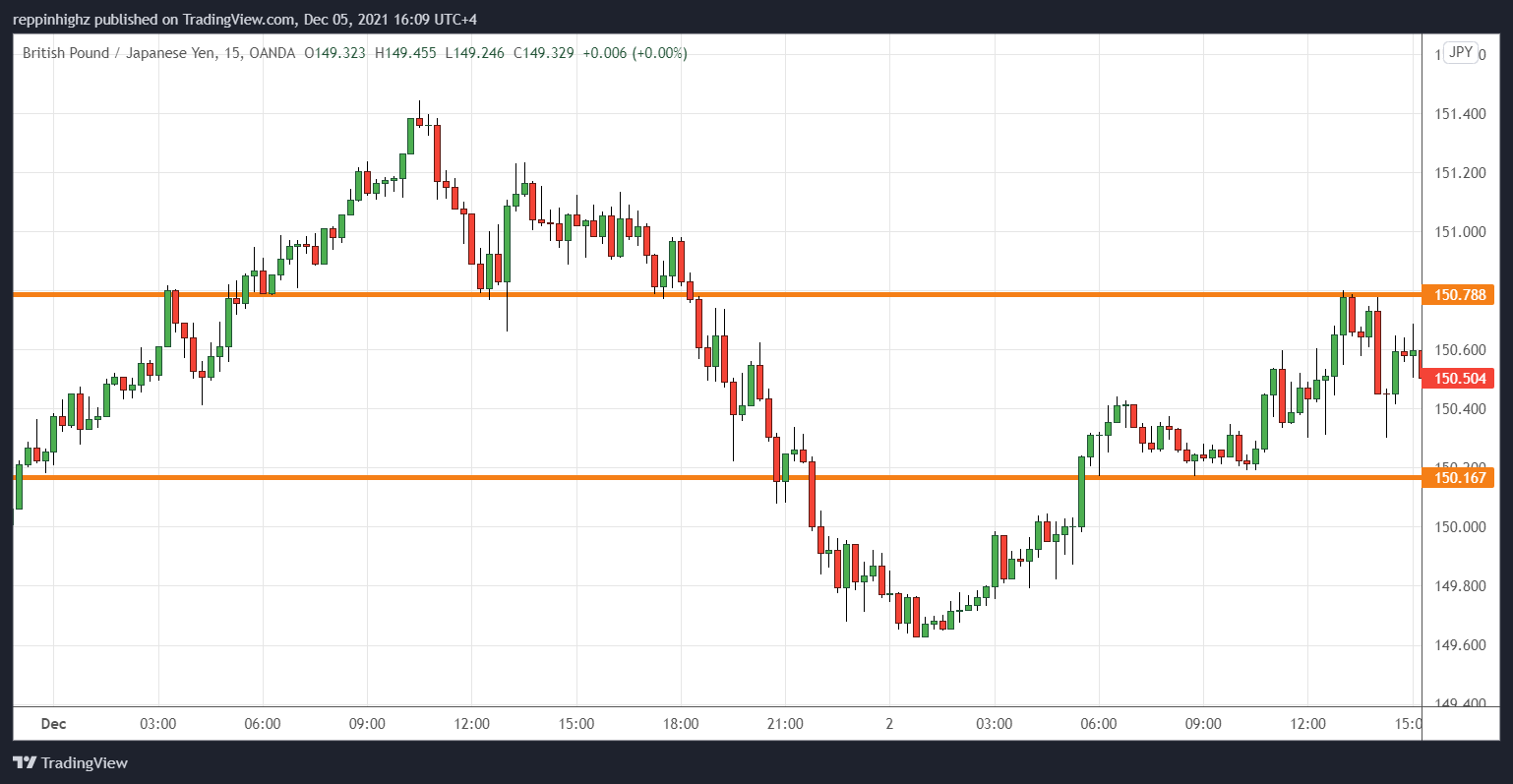
In this example, you can see the GBPJPY pair moving lower and then correcting higher, forming a support area then a resistance zone.
The next few hours, seen in Figure 4, show you that the market remained stuck in that same range, until eventually breaking lower. While trading the range was profitable if traders bought near support and sold near resistance, the final trade would have resulted in a loss given the range came to an end with a break to the downside.
Figure 4
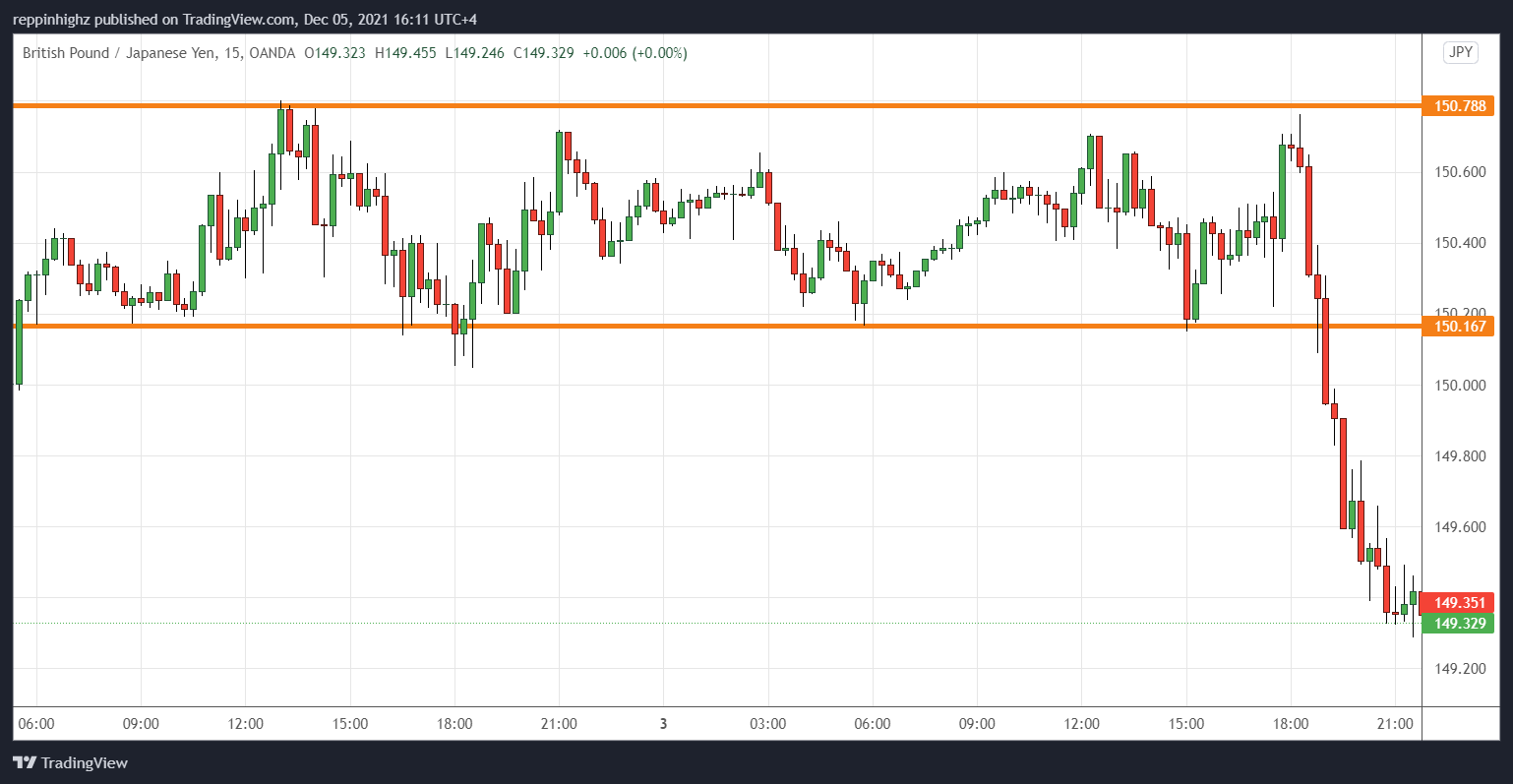
It’s worth mentioning that ranges are not perfect and while it’s easy to establish support and resistance zones, the market may not always respect them to the point and can overshoot or undershoot them, depending on different factors such as volume and momentum.
Structure within structure
Trends will occasionally feature corrections. If we are looking at an uptrend, after some upside, the price may look to correct lower. Sometimes, this correction will be strictly downwards while other times, it may move down a bit and then settle into a trading range. This is referred to as structure within a structure.
In other words, trends can include consolidating periods or ranging conditions. At the same time, ranging conditions can see minor trends on each leg of the swing between the established range, seen in Figure 5.
Figure 5
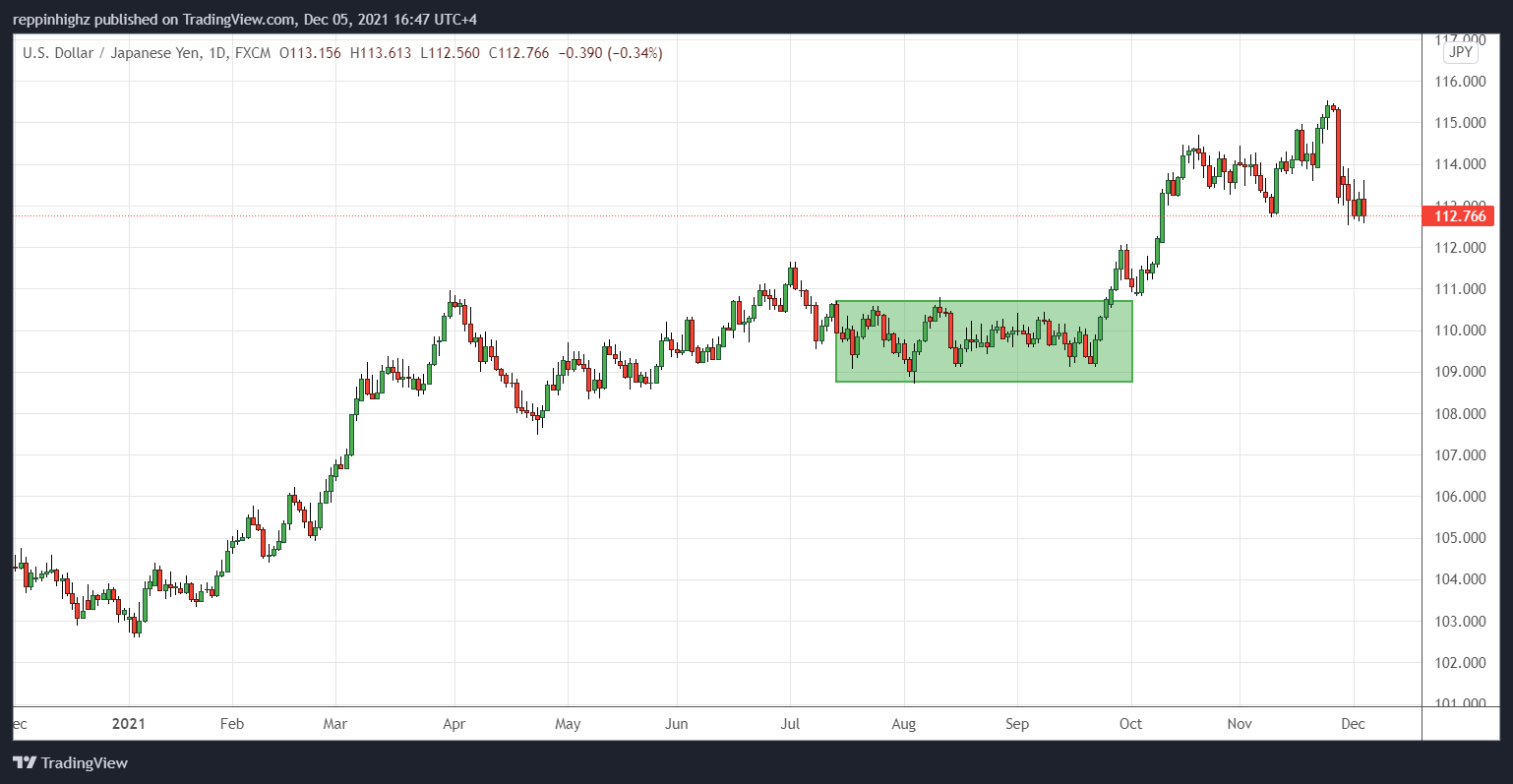
The chart shows a clear uptrend that has been in place since the beginning of the year. The green rectangle highlights a period of consolidation and when zoomed in to a smaller timeframe, shown in Figure 6, it can show how price was range bound for some time before the break higher took place.
Figure 6
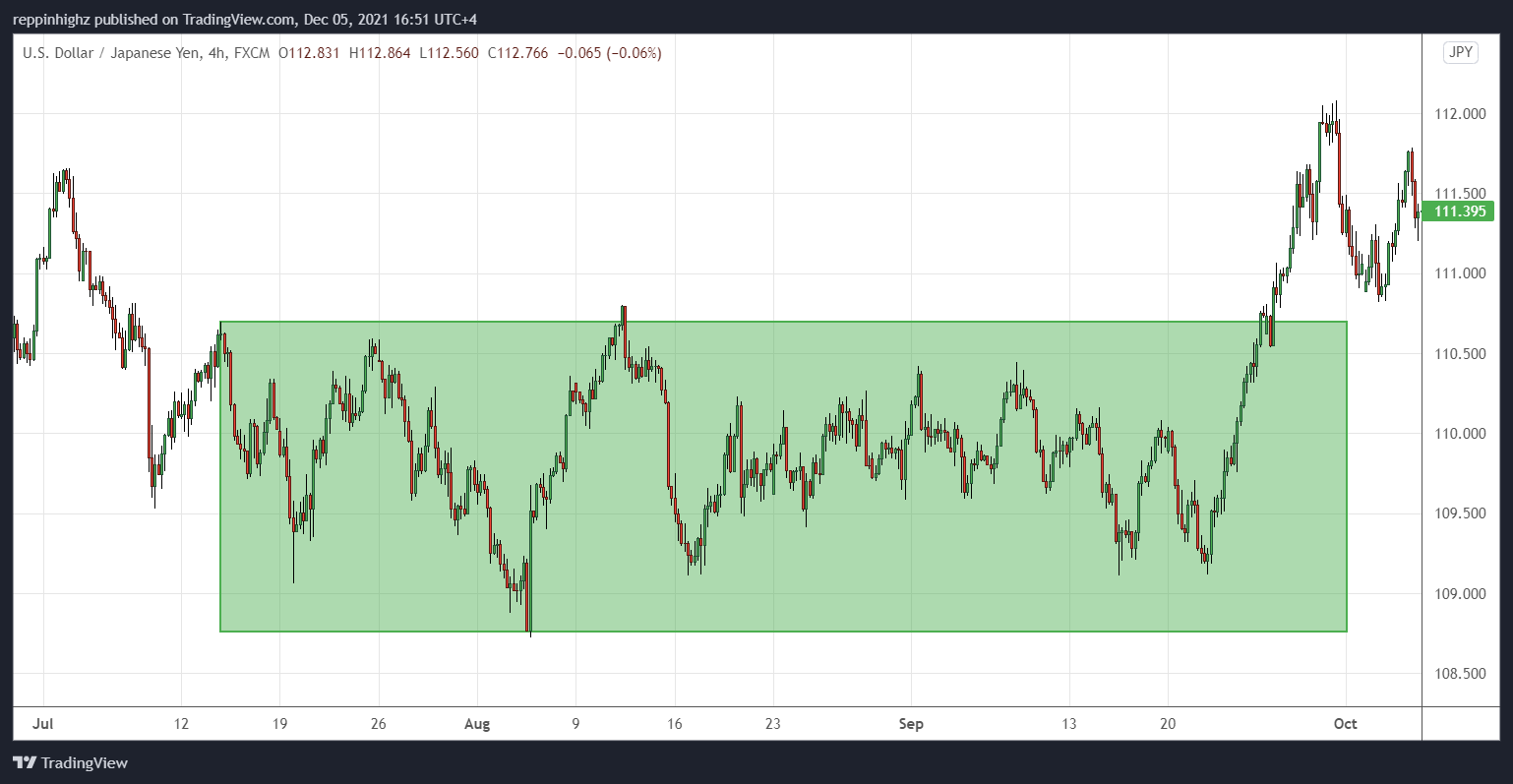
Learning to trade ranges would have allowed you to benefit from the price action during that period, or at least anticipate when the breakout was occurring so that you can join on the next correction of the trend.
Which timeframe should you use?
The timeframe you trade is purely a matter of choice and preference. Some traders prefer a shorter timeframe, where moves are smaller, but the action is quicker, and opportunities are more often. Others may enjoy a longer timeframe where the ranges are bigger and can take hours (and even days) to manifest.
It’s worth noting that even though you may choose a longer timeframe, it’s important to consider a smaller one when looking to enter. It can help you reduce your risk by being more specific and finding optimal conditions.
For example, if you feel comfortable trading ranges on a 4-hour chart and are okay with waiting longer periods of time for an opportunity, you should consider looking at 1-hour or 30-minute charts for a more exact entry when price reach one end of the range.
If you prefer looking at ranges on 30-minute charts, your next timeframe should be a 5- or 10 -minute charts for entry purposes.
Trading trends, especially established ones, is easier than you think with a bit of analysis and common sense. Basically, you need to join this trend at an optimal time, entering when the market is correcting shortly in the opposite direction of the main trend. By doing so, you are able to limit your risk and maximize your reward especially in the vent that the trend does reverse or the market suddenly corrects sharper than what was originally anticipated.
How to trade ranges
Ranges are straightforward with the idea of buying when price is at the lower end and selling when price as at the top of the range. While this could present several profitable opportunities within a single range, it’s worth noting that ranges can end at any moment, and you should always have a stop loss order to any position if the market suddenly breaks out to the upside or downside.
Given that the market is ranging nearly 70% of the time, it would be wise to learn how to trade ranges especially with the multi-timeframe approach which could provide better accuracy and lower risk.
Conclusion
Understanding market structure is just one piece of the puzzle. Try to identify what your market is currently doing. If it’s trending, look to enter on corrections. If it’s ranging, trade the range with multiple timeframes and wait for the breakout to join the trend.
Disclaimer: The content published above has been prepared by CFI for informational purposes only and should not be considered as investment advice. Any view expressed does not constitute a personal recommendation or solicitation to buy or sell. The information provided does not have regard to the specific investment objectives, financial situation, and needs of any specific person who may receive it, and is not held out as independent investment research and may have been acted upon by persons connected with CFI. Market data is derived from independent sources believed to be reliable, however, CFI makes no guarantee of its accuracy or completeness, and accepts no responsibility for any consequence of its use by recipients.




